 |
|

|
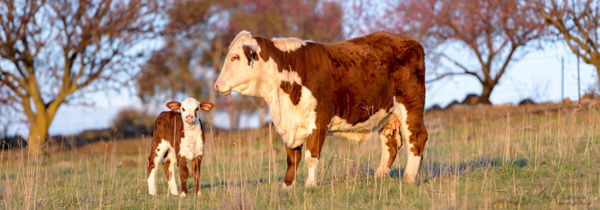 |
 |
July Large Animal News |
July 2018 |
 |
|
 |
Mid July and we are half way thru a very tough winter in the Central West.
Drought conditions throw up livestock issues that we don't often see or commonly manage for. Last month we discussed managing calving cows in supplementary feed situations and risks that need to be considered.
This month Andrew Denman reminds us that we need to be looking forward to the imminent joining period and how important it is not to forget the blokes in this picture.
Our July newsletter is full of information including articles on the calving process, pneumonia in calves, humane euthanasia of livestock and more...read on.
We hope the much needed rain will arrive to deliver a promising spring.
Photo Credit: the17thphotographer
|
 |
 |
|
|
|
 |
 |
01 Don't forget about the blokes! |
 |
 |
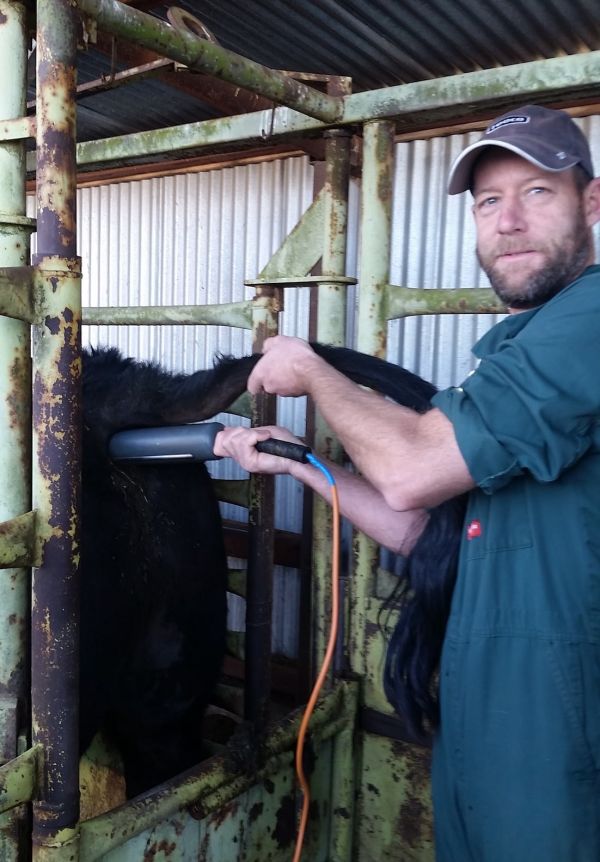 Vet Andrew putting a bull through his checks prior to the all important joining period.
|
|
 |
"With the joining period only two to three months away, now is a good time to start thinking about your bulls. Due to the extended dry period we are very worried that the upcoming joining period may result in lower conception rates than normal.
Everyone is well aware of the effects that nutrition plays on your cows' fertility. Well, nutrition plays just as an important part in your bulls' fertility. We want these bulls to enter the joining period in a good condition score and it is also recommended that they are on a rising plain of nutrition. Also be aware that cottonseed is well known to cause infertility when fed for extended periods to bulls.
Vaccination programs are important to consider at this time as well (Vibrio/7 in1/Pestigard).
OVH recommends that all your bulls be examined prior to the start of joining. We offer a range of services, from a general clinical examination, to a more detailed exam including crush side semen morphological examination. In addition we offer service capacity testing to complete the reproductive examination of the bulls.
Please contact any of the OVH vets for further details on what we can offer you in regards to bull testing prior to joining 63618388.
|
 |
 |
|
 |
 |
02 Top tips for travelling with your horse |
 |
 |
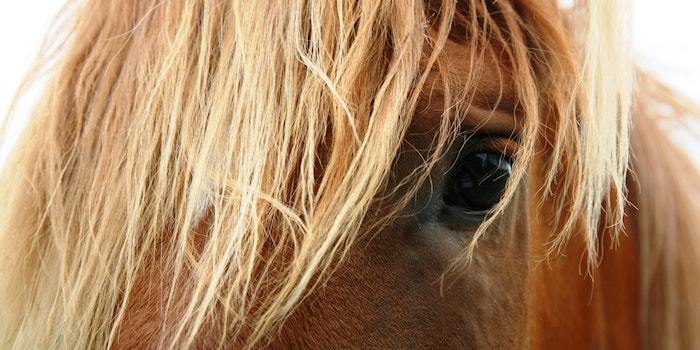
Travelling can be a stressful activity for horses, both mentally and physically. Common travel related health issues can include dehydration, muscle soreness, traumatic injury, and colic. Long distance travel also risks the development of respiratory conditions such as “shipping fever”. So, what can you do to help prevent some of these problems for your horse?
Check your float: Ensure your float is regularly serviced and is safe and roadworthy. Be sure to carefully inspect the float flooring, as this is what is separating your horse from the bitumen below.
Hydration: Provide constant access to good clean water in the lead up to travel. Drinking can be encouraged by giving some electrolyte paste or by adding a small amount of salt to the feed. For horses which are fussy drinkers, try taking some familiar tasting water from home away with you. Remember, horses normally drink between 20-55 litres of water each day.
Ventilation: Make sure your float is well ventilated and free of dust and irritants which can wreak havoc on your horse’s airways. Be wary of ambient temperature during travel. On warm days, ensure good airflow and avoid rugging. Check the temperature inside the float regularly to avoid chilling or overheating your horse, and consider avoiding travel altogether in extreme temperatures.
Take regular breaks: Keep trip length to a 12 hour maximum. Stop every 3-4 hours to offer water, and ideally allow your horse to stretch his legs. At these breaks, offer grass or feed at ground level to enable your horse to lower his head and clear the airways.
|
 |
 |
|
 |
 |
03 Humane euthanasia of livestock |
 |
 |

An unfortunate reality of livestock farming which we all face is the decision and necessity of euthanising animals. We do this for a variety of reasons, including poor and hopeless prognosis for disease, no improvement of disease within a suitable timeframe, unfit for transport or human consumption. Whatever the reason, once we make the decision to euthanise, we must ensure the process is done promptly, safely and humanely.
On farm, the options we have available to us are:
- Close-range firearms to the brain: minimum 0.22 long rifle cartridge
- Captive bolt to the brain
- Chemical euthanasia (Veterinarian only)
- Blunt trauma (Calves less than 24 hours only when other options are not available)
Of recent times, there has been a lot of encouragement in the livestock industries to be training people on farm and throughout the supply chain to use captive bolt guns. The captive bolt gun is very effective for euthanising all animals from calves to large bulls. These do not require specific licensing or permits which make them more readily available than guns on farm however you are required to complete a specific training program in the use of this equipment before purchase.
We can advise you who to contact if you are interested.
|
 |
 |
|
 |
 |
04 Tips for calving cows this spring |
 |
 |
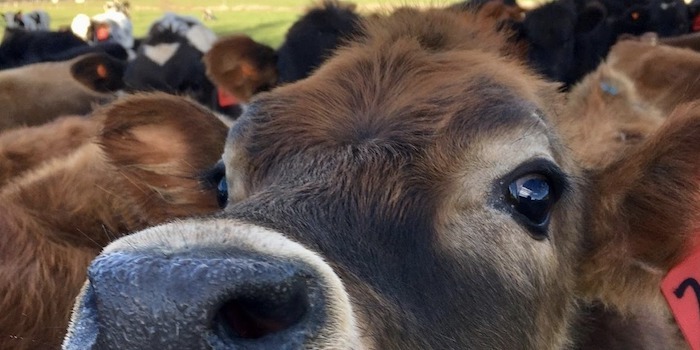
It is important to understand the normal calving process to know when to intervene. The normal calving process is divided into 3 stages of labour, as follows:
Stage 1 – This is where the soft tissues of the birth canal dilate in preparation for calving
Stage 2 – In this stage the cow will lie down with active contractions until the calf is delivered. Average 70 minutes in a normal calving with progress seen every 15 – 20 minutes
Stage 3 – this is the expulsion of the placenta and should be complete within 24 hours of calving
Signs of trouble calving/when to intervene
- Slow progress of expelling the calf in stage 2 i.e. no further progress after 20 minutes
- If 2 hours of labour has passed without complete delivery
- Presence of the water bag or feet without any further progress of calving
- Where it can be seen that the calf is not in the correct position. Examples of this include if only one leg can be seen outside the vulva.
- If you can see yellow fluid coming out (meconium).
Tips for assisting a cow that is having trouble calving
- Always clean the vulva and perineum before having a feeling inside.
- Use plenty of lube.
- Do not try to pull it out unless you are sure it is in the correct position!
- When using mechanical calf pullers, force should never be excessive – the calf will come with steady traction providing it is not too big and in the correct position.
When is it time to call the vet?
- If you have tried for 20 minutes and the calf is not out
- If you can feel that the calf is not in the correct position and you are unable to correct it
- If the calf is not progressing out despite using steady pulling/ traction with the calf in correct position – likely indicates too big to come out without veterinary intervention
|
 |
 |
|
 |
 |
05 How to resuscitate a calf |
 |
 |

You have probably come across calves which require resuscitation after delivery. These are calves which have become stressed and depleted of oxygen during the delivery process. They may have swollen heads, blue gums, slow/weak or absent breathing, a flaccid/floppy body and a poor or absent suck reflex. Without mechanical ventilation, many of these calves will die soon after birth.
We do not recommend ‘mouth to mouth’ in the calves due to OH&S issues, however there is a very good device on the market which is specifically designed to resuscitate calves.
The McCulloch Medical™ Aspirator / Resuscitator work to first remove mucous from calf’s airways, then deliver air to it’s lower airways. A video can be found here.
The resuscitation process is as follows:
Aspiration
- Attach the aspirator mask on the wide end and place over the muzzle
- A vacuum is created when the unit is pumped to remove mucus or fluids that may be blocking the airway
- Tilt head back to open airway
- Use four or five pumps to draw the mucus or fluids into the aspirator mask
- Remove the aspirator mask from the pump and follow resuscitation instructions
Resuscitation
- Attach the resuscitator mask to the small end of the unit and place over the muzzle
- Hold push down over the oesophagus (just above the trachea) to prevent air going into the stomach
- Pump resuscitator every 5 to 10 seconds to allow full exhalation
- Breathing should be stimulated with as few as 5 to 10 pumps. Check for breathing every few pumps
- If not breathing after 4 to 5 pumps, turn the calf over and repeat. This will allow the lung previously closer to the ground and weighed-down by internal organs to inflate more easily
- Continue while heartbeat remains
Please contact us if you are interested in buying one.
|
 |
 |
|
 |
 |
06 Pneumonia in calves |
 |
 |
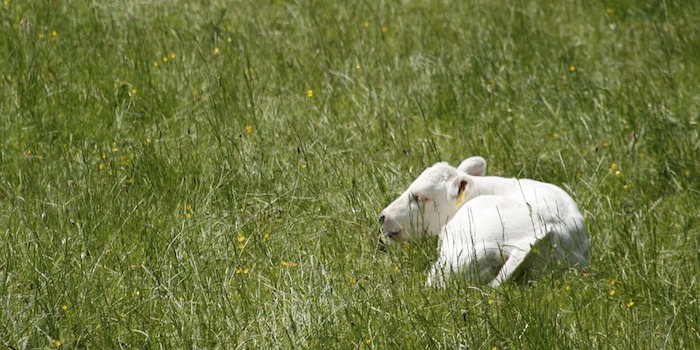
Pneumonia is a very frequently occurring disease in calves. It is often seen in calves 4-6 weeks of age and post weaning. The disease is characterised by:
- Open mouth breathing
- Nasal and oral discharge
- Coughing
- Drooping ears
- Increased respiratory rate
- Fever >39.3oC
- Sudden drop in condition
- Reduced appetite
The risk of a calf developing disease depends on several factors which relate to either the chance of exposure to a pathogen and the immunity of individual. Cold weather, poor air quality, mixing of age groups and overcrowding increase the chance of exposure. While a calf gains immunity from colostrum; stress, ventilation and husbandry influence their ability to fight disease.
Prompt treatment of calves is essential for good outcomes. The lungs can become permanently damaged following a bout of pneumonia. In fact, a calf which develops pneumonia pre-weaning is 1.8x as likely to suffer from calving difficulties as a heifer. This indicates the lifelong impact that pneumonia has on dairy cattle.
If you are having trouble with pneumonia in calves, please call us. We can provide a correct diagnosis, look for risk factors to reduce disease and set up treatment plans for your calves.
|
 |
 |
|
 |
 |
07 Cattle crush design and safety |
 |
 |
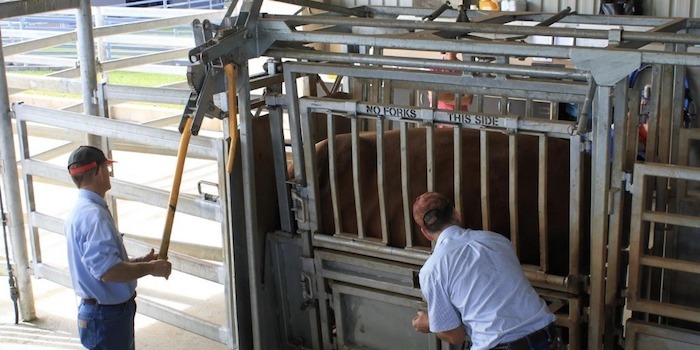
A well designed crush makes for efficient, low stress and safe cattle handling. As vets, we have seen the full spectrum, from hydraulically operated walk through crushes to the older style guillotine crush. From our perspective we are looking for a crush which is efficient to work in and safe. The cattle crush can be a dangerous place – injuries from crushing, being kicked, or being knocked by fast moving bits of the crush have been all too common.
Choosing a crush will depend on a number of factors including stock to be restrained, the procedures to be performed, staffing levels and experience, and cost. There will not be one crush which suits every purpose.
To help vets, farmers and manufacturers with design and selection of appropriate crushes, the Australian Cattle Veterinarians put together a document which is now sitting on their new website. Head to mycattlevet.com.au/cattle-crushes if you are thinking about investing in a new crush, or download the Crush Design and Safety Publication.
|
 |
 |
|
 |
 |
08 Horses with Narcolepsy |
 |
 |
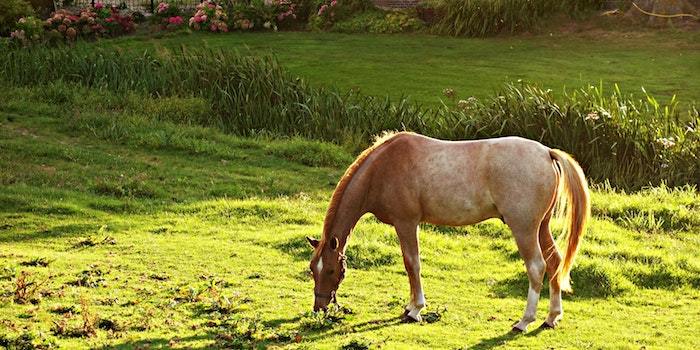
Narcolepsy is a rare sleep disorder that has been recognised in many species. The condition affects around 1 in every 2000 humans, however the true incidence of narcolepsy in horses is unknown.
Narcolepsy in horses, and many other mammals, is characterised by periodic episodes of “cataplexy”. Muscle function is temporarily affected resulting in mild weakness to complete collapse. During most attacks horses will regain strength and stand without falling, but occasionally horses may fall completely.
Horses suffering from narcolepsy may show unexplained abrasions or injuries associated with weakness or collapse, especially over the fetlocks and hocks.
In humans, emotions can be triggers for narcoleptic attacks. However, in horses, attacks can occur during routine activities such as leading a horse out of his stable, hosing off after exercise, or during the first mouthful of water or feed. There is even the potential for a horse to suffer a narcoleptic attack during riding.
The exact cause of narcolepsy is not known. Diagnosis can be challenging as episodes can be difficult to observe, although video recording of a horse in his stall can be helpful. It is very important to rule out other conditions that may cause sudden collapse, such as heart conditions, seizures and other neurological diseases.
Unfortunately, there is no cure for narcolepsy in horses or humans. One of the more common drugs used in human patients, imipramine, has been used in horses with inconsistent results. The negative side effects of such medications should also be considered.
|
 |
 |
|
|
